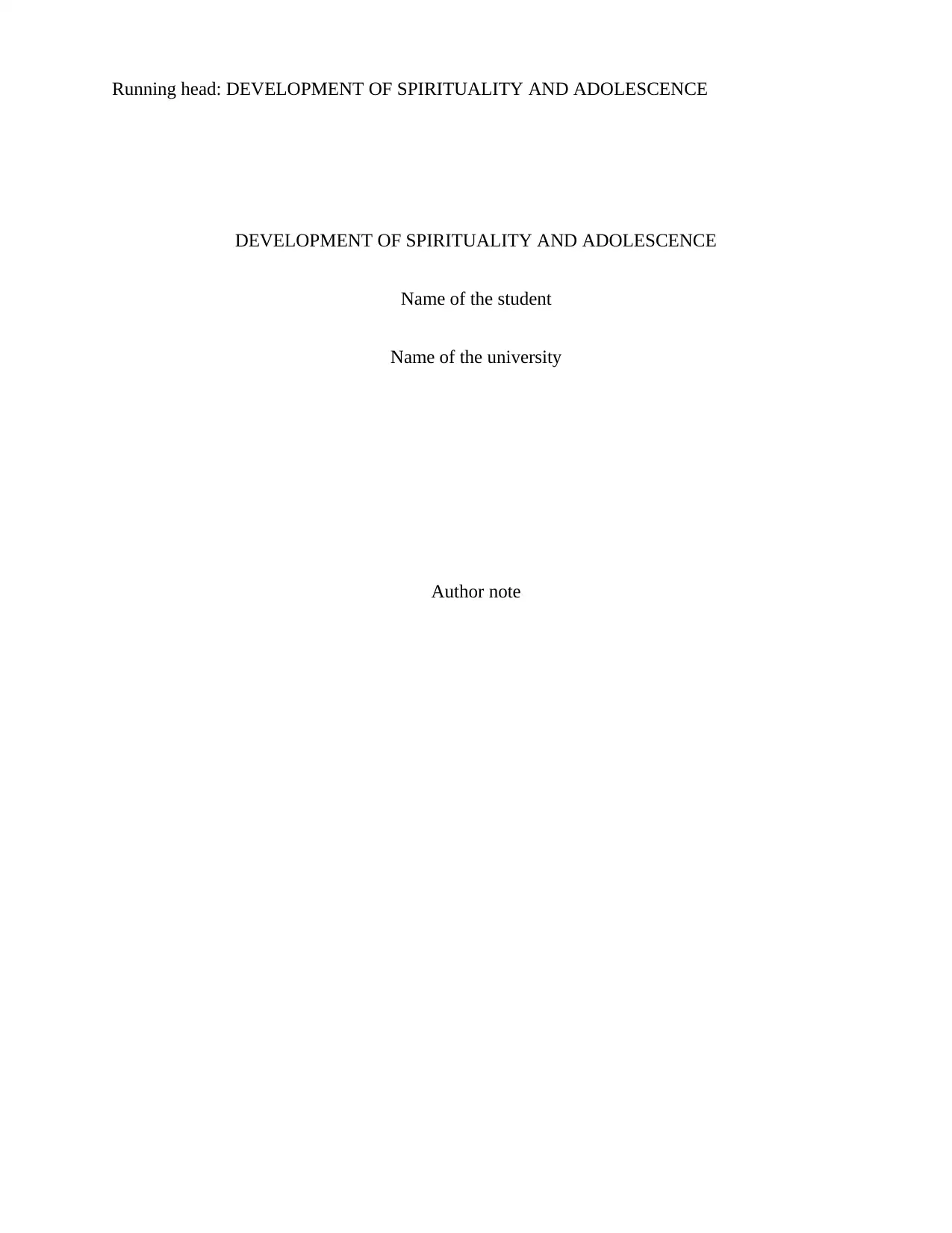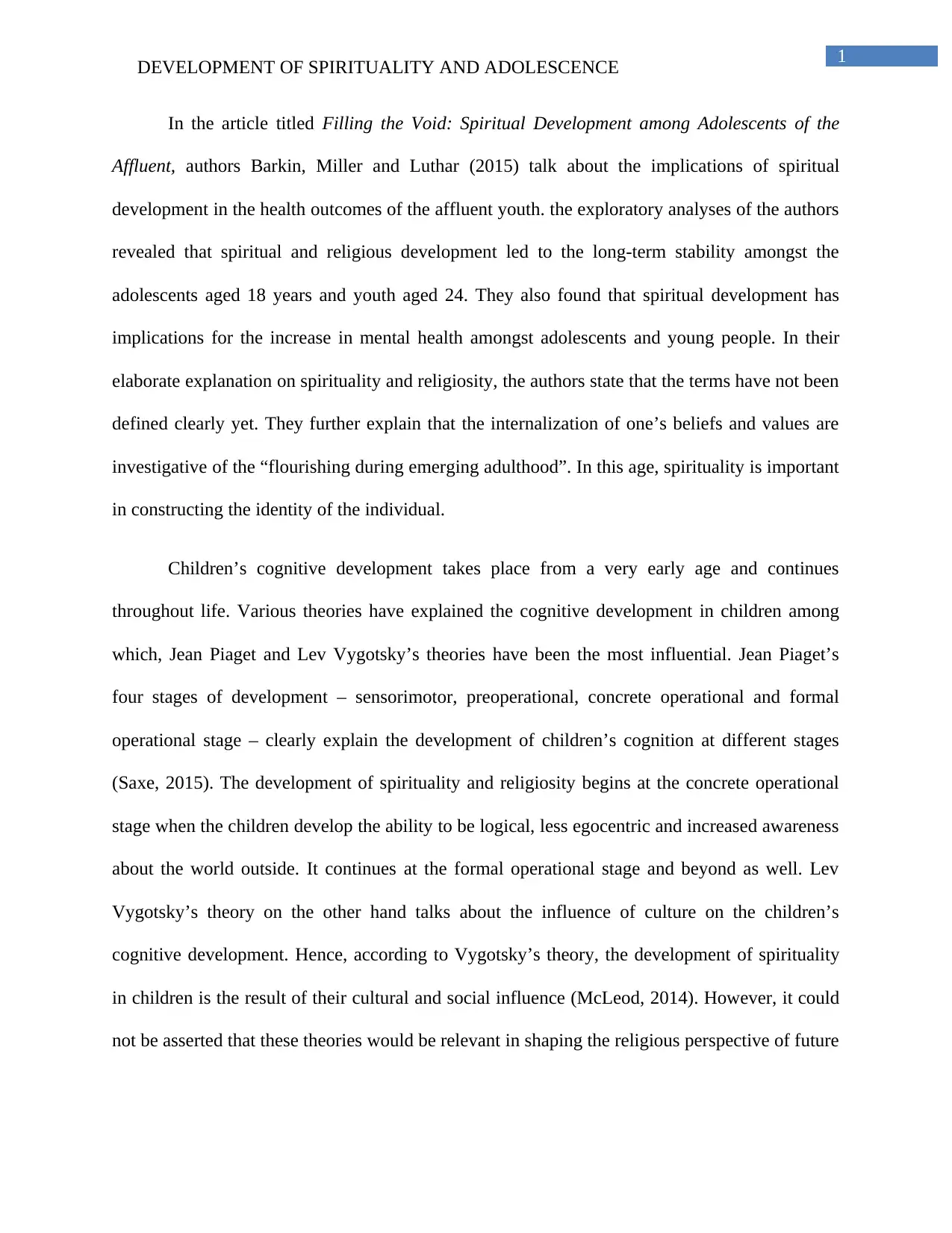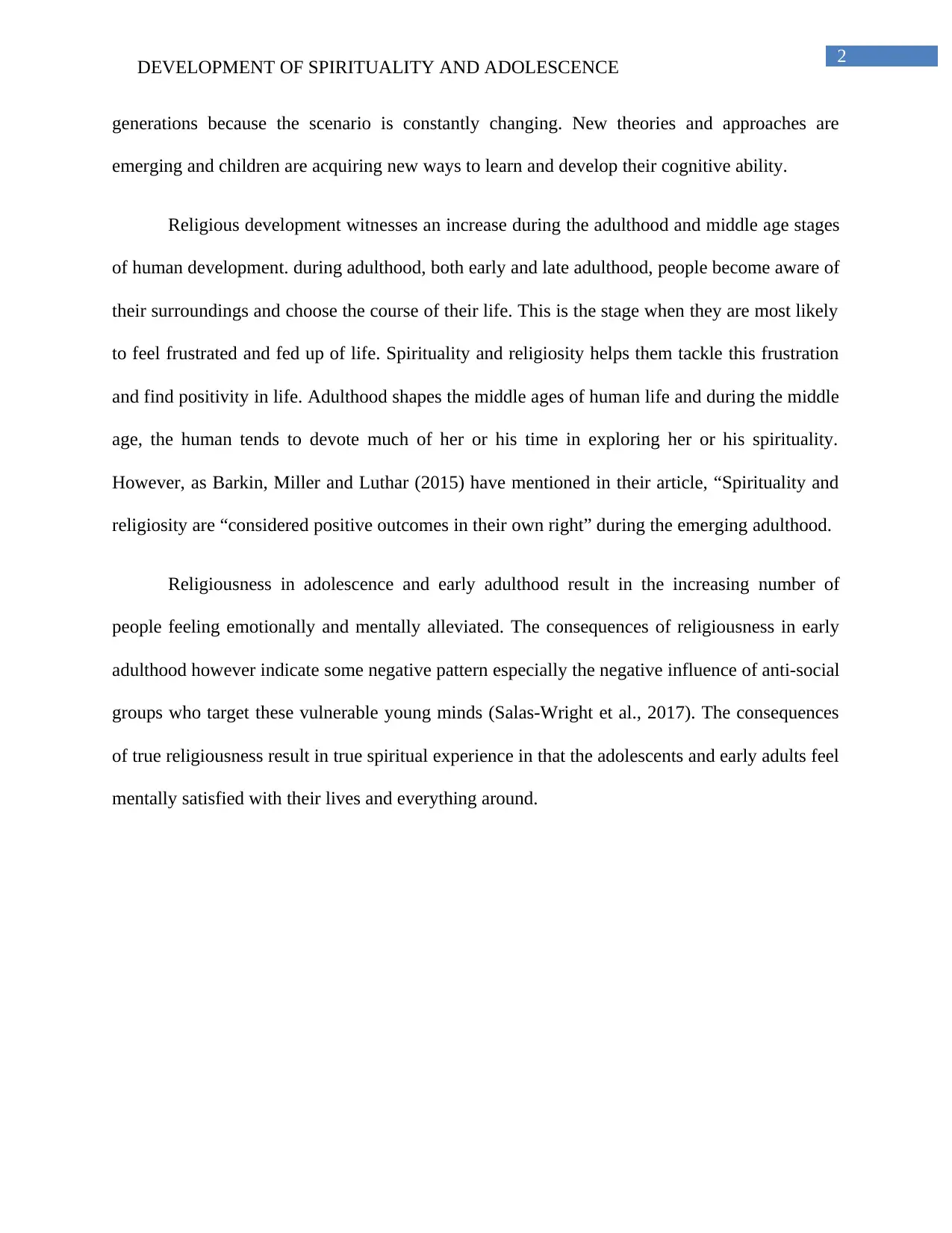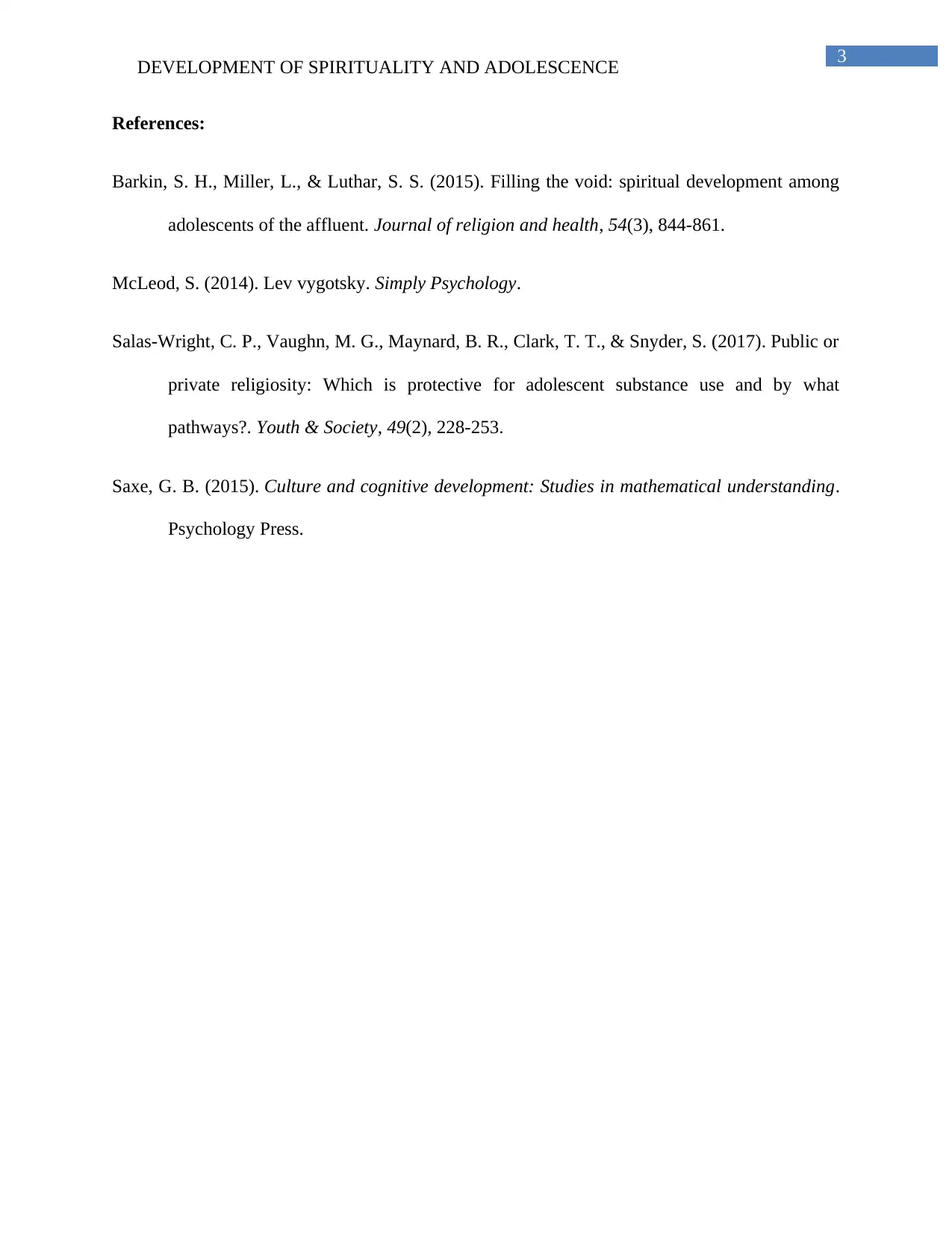Development of Spirituality and Religiousness in Adolescence
VerifiedAdded on 2022/11/14
|4
|760
|65
Discussion Board Post
AI Summary
This discussion post examines the development of spirituality and religiousness in adolescence, drawing on a scholarly article that explores spiritual development in affluent youth and its impact on mental health and long-term stability. The post summarizes the article's key findings, including the importance of spiritual development for identity formation. It then analyzes two cognitive-developmental approaches, Piaget's and Vygotsky's theories, and their influence on children's perspectives on religion. The post also considers the relevance of these approaches for future generations, acknowledging the evolving nature of learning and religious perspectives. Furthermore, it explores the significance of adolescence and middle adulthood in religious development, highlighting how spirituality helps individuals navigate life's challenges. Finally, the post discusses the manifestations of religiousness in adolescence and early adulthood, including both positive and negative consequences, and explains how these consequences relate to spiritual experiences. The post is properly cited using APA format, with a minimum word count of 500 words.
1 out of 4











![[object Object]](/_next/static/media/star-bottom.7253800d.svg)